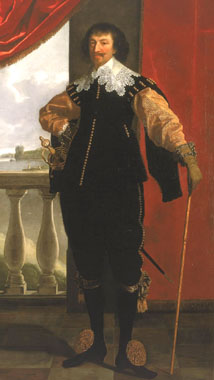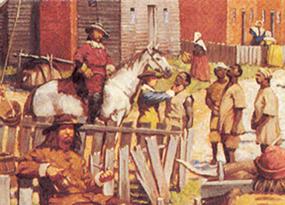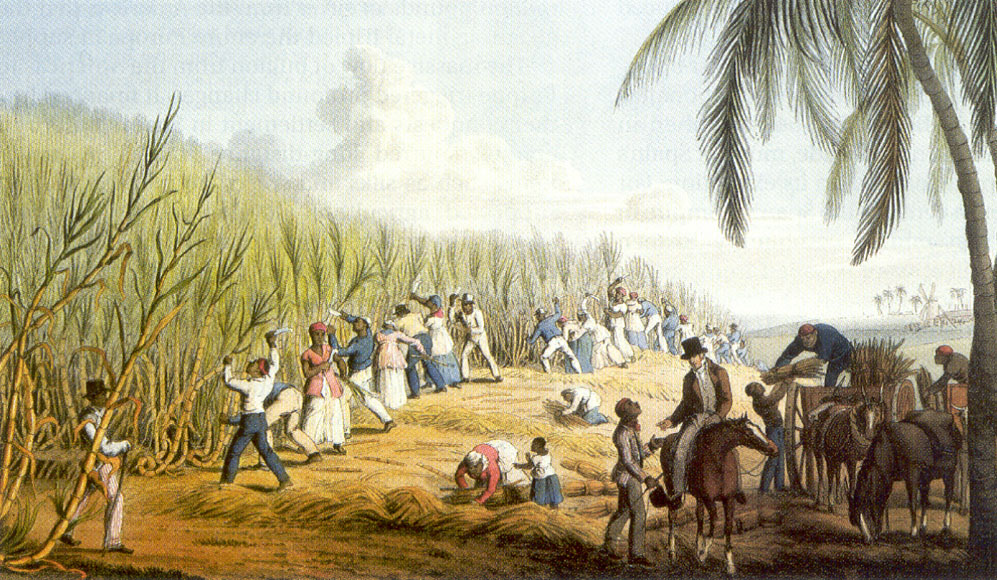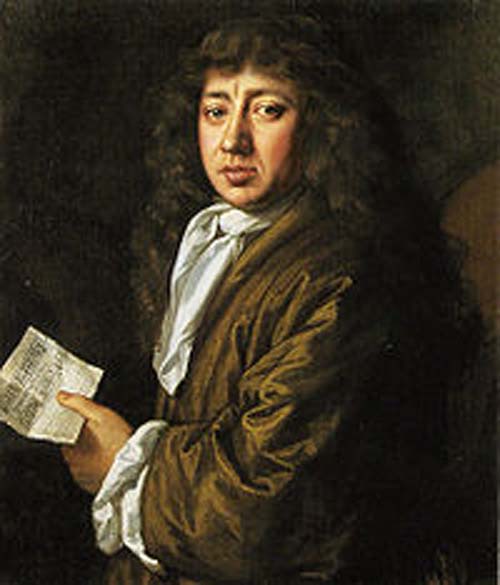
From the PBS series Africans in America, "Royal African Company established: 1672," -- Long before the establishment of Jamestown, English captains had made occasional profits in the rising trans-Atlantic slave trade. Bur during the early years of the 17th century, the English generally viewed the trading of human lives with a certain degree of contempt. By 1640, however, with the growth of sugar plantations in the Caribbean and the corresponding need for labor, the views of the English had changed. They, too, would become regular participants in the trade.
In 1660, the English government chartered a company called the "Company of Royal Adventurers Trading to Africa." At first the company was mismanaged, but in 1663 it was reorganized. A new objective clearly stated that the company would engage in the slave trade. To the great dissatisfaction of England's merchants, only the Company of Royal Adventurers could now engage in the trade.
The Company did not fare well, due mainly to the war with Holland, and in 1667, it collapsed. But out of its ashes emerged a new company: The Royal African Company. Founded in 1672, the Royal African Company was granted a similar monopoly in the slave trade. Between 1680 and 1686, the Company transported an average of 5,000 slaves a year. Between 1680 and 1688, it sponsored 249 voyages to Africa.
Still, rival English merchants were not amused. In 1698, Parliament yielded to their demands and opened the slave trade to all. With the end of the monopoly, the number of slaves transported on English ships would increase dramatically -- to an average of over 20,000 a year. (source: PBS)

Map of Barbados
From Port Cities: Bristol "London and the transatlantic slave trade -- 17th-century expansion -- English settlements in the Americas"
Despite several attempts, no English settlements were successfully established in North America or in the West Indies during the reign of Elizabeth I. But in the 17th century the English began to acquire territory in the New World.
The English colonies expanded rapidly. Settlers from the British Isles sailed across the Atlantic to seek a new life. The most famous were the Pilgrim Fathers, who left from London in the Mayflower, arriving in New England in 1620.
Tobacco plantations were established in Virginia, and sugar was grown on English islands in the Caribbean, such as Barbados.
The development of a plantation system and the growth of the Atlantic economy brought further demands for African labour. This increased the scale of the trade in enslaved people.

Sir Robert Rich. © NMM
Expansion of the English trade
The trade involved a number of prominent people. For example, Sir Robert Rich (later the Earl of Warwick) owned plantations in Virginia.
Rich was one of the founders of the London-based Company of Adventurers to Guinea and Benin. The Company was established to trade with West Africa and supply enslaved Africans to the Americas.
Other companies and groups of merchants followed suit. Charles I granted a licence to another syndicate of London merchants in 1632 for the transportation of enslaved people from West Africa.
This trade became a profitable enterprise. It soon attracted support from the City of London, especially following the English capture of Jamaica in 1655.
The moral implications of selling Africans into slavery were of secondary importance to the creation of wealth. For those involved, slave trading and plantation slavery were regarded as simply another form of business.
Samuel Pepys, 1633-1703 invested in the Royal Adventurers into Africa, which was involved in the transatlantic slave trade. © NMM
The Royal Adventurers
With the Restoration of the monarchy under Charles II, following the turmoil of the Civil War and Cromwell’s Commonwealth, English trade with Africa and the Americas was reorganized.
In 1660, the king granted a charter to the Royal Adventurers into Africa. Supporters of the new company included:
- members of the royal family
- important nobles
- major London merchants.
- Samuel Pepys also became a shareholder.

Rise and fall
The company quickly established its trade in gold, enslaved people and African goods. Some of the gold brought from West Africa was minted into coins, which were soon popularly known as 'guineas'.
In 1665, it was estimated that the company earned £100,000 from the trade in enslaved Africans, which had become an important part of its activities. Thousands were transported in company ships to the West Indies.
But the company’s finances were never on a sound footing. Private traders removed any advantage of the monopoly over the African trade. In 1672, the Royal Adventurers ceased trading.

James, Duke of York, was the governor of the Royal African Company as well as being its largest shareholder. He was also a major investor in the Royal Adventurers into Africa. © NMM
The Royal African Company
The end of the Royal Adventurers was swiftly followed the same year by the creation of the Royal African Company (RAC). James, Duke of York, was the governor and the company’s largest shareholder.
The company, like the Royal Adventurers, maintained its connections with the City of London. The RAC had 15 lord mayors of London and 25 sheriffs of London among its shareholders.
Between 1672 and 1689, the company transported nearly 90,000 enslaved Africans to the Americas. However, just as with the Royal Adventurers, the monopoly of the RAC was undermined by private traders.

The Royal African Company
Competition from Bristol
Many of these 'interlopers' came from Bristol, which had a natural advantage for the Atlantic trade. By the end of the 17th century, Bristol had become an important centre for the England’s Caribbean trade and a major centre for sugar processing.
Despite its difficulties, the RAC’s business flourished. In 1698, it lost its official monopoly and the number of ports and individuals involved in the slave trade grew enormously as a result. The RAC continued to trade, however, and its fortunes revived in the early 18th century.

Consumer demand and the trade in enslaved people
The slave trade was fuelled by the massive demand for sugar in Europe. The craze for sweetened tea, coffee and chocolate meant that sugar was at a premium.
Planters in the West Indies were anxious to increase production to maximize their profits. This resulted in a growing demand for enslaved African labour:
- to replace those killed by the harsh conditions
- to supply the new plantations.
Other important consumer goods, like tobacco and cotton, were also produced using slave labour.
[source: http://www.portcities.org.uk/london/server/show/ConNarrative.103/chapterId/2252/outputFormat/print/London-and-the-transatlantic-slave-trade.html]
[source: http://www.portcities.org.uk/london/server/show/ConNarrative.103/chapterId/2252/outputFormat/print/London-and-the-transatlantic-slave-trade.html]


No comments:
Post a Comment